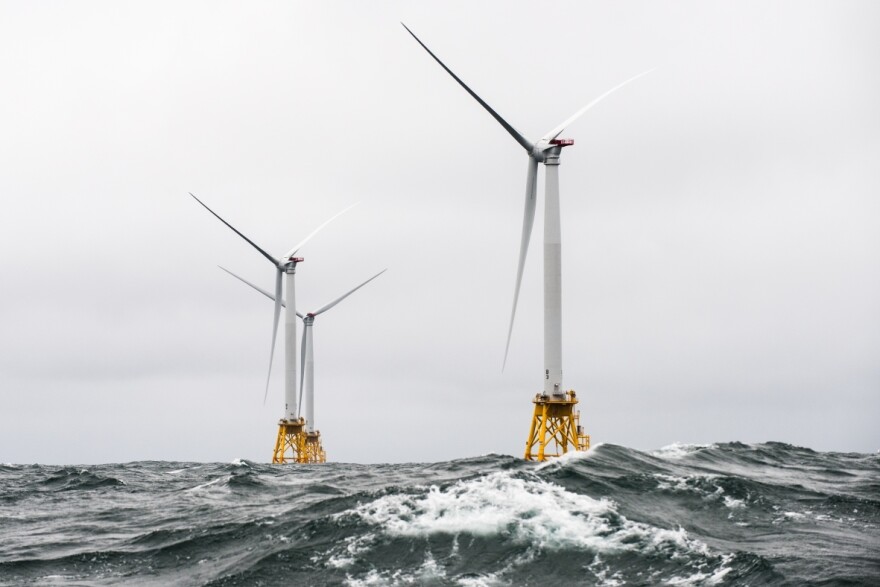Gov. John Bel Edwards has set a goal for Louisiana to be carbon neutral by 2050, but so far, the state is behind its neighbors. Now, Edwards wants to develop offshore wind power in the Gulf.
It’s something that’s already happening in other parts of the country — with help from a Louisiana company, even.
Just off the rocky coast of Rhode Island, five giant white wind turbines turn in the wind. It’s the first commercial offshore wind farm in the U.S., partially built by Gulf Island Fabrication, a Houma-based steel fabricator. The company used its expertise in old-school oil platforms to build the bases for the nearly 600-foot tall wind turbines.
Edwards is asking the federal Bureau of Ocean Energy Management (BOEM) to launch a task force to figure out what it would take to build those here.
“This is not some ‘pie in the sky’ promise of economic opportunity,” Edwards said in a statement. “We already have an emerging offshore wind energy industry, and Louisiana’s offshore oil and gas industry has played a key role in the early development of U.S. offshore wind energy in the Atlantic Ocean.”
He encouraged members of the state’s new Climate Initiatives Task Force to explore such ideas during its first meeting on Nov. 9.
“If anyone can identify innovative and sustainable solutions for the future, it is Louisiana,” Edwards said.
Yet the state is a far way off from embracing renewable energy. Texas gets close to 20 percent of its energy from renewables. In Georgia, 30 percent of the power is from solar. In Louisiana, only one percent of the power is solar, and there’s little to no wind.
For decades the state has subsidized the oil and gas industry with tax breaks and incentives but made it hard for wind and solar companies to operate or develop.
BOEM has commissioned several studies of how much power could be produced by the Gulf of Mexico, be it from wind, waves, tides, currents, the sun or hydrogen.
Walter Musial, a principal engineer at the National Renewable Energy Lab, led the study. He found that wind held the greatest potential.
“If you put wind turbines in all of the windy waters of the Gulf of Mexico,” he said, “you would make twice as much energy that those states needed.”
That, of course, would take millions of dollars of decades. But Musial thinks developing portions of the Gulf could be worth it. He found that a single offshore wind project could support almost 5,000 jobs and generate almost $500 million.
It would also be an engineering challenge to build offshore wind turbines in the Gulf — they would need to be strong enough to withstand hurricanes.
Craig Brown, a consultant with The Renewables Consulting Group, said that’s also where Louisiana also has some huge advantages.
“Louisiana’s biggest advantage is tapping into offshore oil and gas supply chain,” he said.
The state already has all of the expertise and infrastructure — in shipyards, offshore services and ports — to build offshore turbines, whether to install in the Gulf or ship internationally.
Simon Mahan, executive director of the advocacy group the Southern Renewable Energy Association, said the state is facing a crossroads.
“If Louisiana really wants to remain an energy player in the 21st Century, it has got to prioritize 21st Century industry, like renewables.”
Gov. Edwards is going to have to make a choice.
“Does he want to position Louisiana as sort of a supply hub for the U.S. Northeast?” Brown asked. “Or does he want to actually have offshore wind energy become a viable energy source for Louisiana?”
Sign up for our New Orleans Public Radio newsletter or WRKF's weekly newsletter and we'll send you a news roundup at the end of each week, so you never miss a thing.
Copyright 2020 WWNO - New Orleans Public Radio


